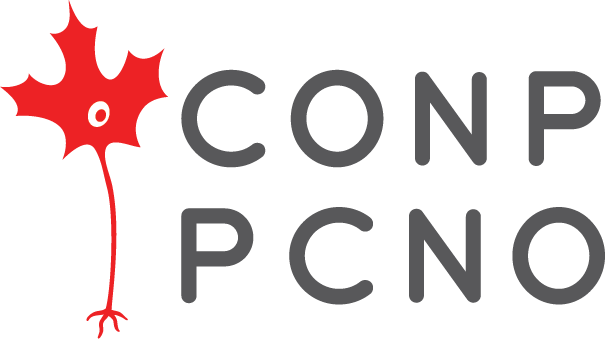What exactly do you mean by 'dynamic papers'?
Dynamic papers seamlessly integrate code, data, and scientific prose within cloud-based, fully reproducible runtime environments.
💻🎚️ Readers can engage with your interactive content directly in their browser with a single click, modifying parameters or rerunning computations without installing local software.
🐝🌸 Beyond interactivity and reproducibility, dynamic papers can "communicate" with each other, enabling new studies to emerge as cross-pollination of existing research.
📈🔄 Unlike traditional static PDFs, dynamic papers can evolve over time as new data becomes available, allowing research to remain current and relevant.
🚀🔍 This dynamic nature means findings can be updated, methods refined, and conclusions strengthened—freeing scientific knowledge from the constraints of frozen-in-time publications and accelerating the pace of discovery.
How can I create a dynamic paper?
Creating a dynamic paper involves the same core work you'd do for a traditional publication, but with significantly greater impact.
🧩 Rather than fragmenting your research across separate files for code, data, and text, you simply integrate everything into a cohesive whole.
🔗 By leveraging the intuitive features of the MyST document engine, you can seamlessly combine Jupyter Notebooks and Markdown documents.
💡 The small learning curve is a modest investment that yields tremendous returns: your work becomes not just published, but truly reproducible, interactive, and enduring.
We built this publishing platform because we believe that after you've done the hard work of conducting great research, your results should not be locked in a static PDF.
Scope & submission requirements
Evidence is meant for all scientific disciplines.
We incorporated 22 publishing tracks (including 19 communities of Peer Review in (PCI)), and additional topics to cover a wide range of scientific disciplines.
Evidence submissions must:
- Source from an open-source GitHub repository (i.e., have an OSI-approved code license) that adheres to Evidence's layout.
- Have an obvious research application or an educational purpose.
- Include code and data (preferably) to reproduce the results. Nevertheless, we accept text-only submissions as not all research is computational.
- Pass through a decency check and a technical screening process (we do not review the scientific merits).
Evidence Chair
Chief Architect and Developer
Publishing Committee
Pierre Bellec (@pbellec)

Elizabeth DuPre (@emdupre)
Robo Neuro (@roboneuro)
Your trusty editorial bot with a flair for the fabulous world of reproducible preprints.

Loic Tetrel (@ltetrel)
Contact Evidence
If you need to contact Evidence privately then you can email us.
Code of Conduct
Although spaces may feel informal at times, we want to remind authors and reviewers (and anyone else) that this is a professional space. As such, the Evidence community adheres to a code of conduct adapted from the Contributor Covenant code of conduct.
Authors and screeners will be required to confirm they have read our code of conduct, and are expected to adhere to it in all Evidence spaces and associated interactions.
Ethics Guidelines
We also want to remind authors and screeners (and anyone else) that we expect and require ethical behavior. Some examples are:
- All authors are obliged to provide retractions or corrections of any mistakes of which they become aware.
- Plagiarism (e.g., violation of another author's copyright), for both software and papers, is not allowed.
- Self-plagiarism (repeated publication of the same work) is not allowed.
- Author lists must be correct and complete. All listed authors must have made a contribution to the work, and all significant contributors should be included in the author list.
Allegations of research misconduct associated with a Evidence submission (either during review, or post-publication) are handled by the Evidence ethics team. Reports should be sent privately to our editorial team at which point the report will be triaged by the Evidence ethics officer to determine the nature and severity of the case. Options available to the Evidence ethics officer range from recommending no action to instigating a full investigation by the Evidence ethics team which may result in researchers' institutions and funders being notified and the Evidence being retracted.
Although Evidence is not yet a member of COPE (application pending), our processes are modeled on the COPE guideline procedures for ethics complaints.
Complaints processComplaints about the conduct or decision making of the Evidence editorial team can be sent to the Evidence governance team.
Evidence Publication Ethics and Malpractice Statement
Editorial Board- The Evidence editorial board's members are recognized experts in the field. The full names and affiliations of the members are provided on the journal’s website (see editorial board). The individual editors' contact information are provided on that site, via their GitHub pages, and general contact information for the editorial office also on the journal’s website.
- Evidence does not charge any fees for manuscript processing and/or publishing materials, as is stated on the journal's website.
- Authors are obliged to participate in peer review process, as described in submission guidelines.
- All authors have significantly contributed to the research. The submitting author is required to be a major contributor to the software they are submitting and the review process includes a check that ‘the full list of paper authors seems appropriate and complete?’.
- All authors are obliged to provide retractions or corrections of mistakes (see ethics and what should my paper contain?).
- Evidence papers are required to have a list of references, and financial support.
- Forbidden to publish same research in more than one journal (see ethics).
- All of Evidence's content is subjected to peer-review (see about and docs).
- Evidence peer-review is defined as obtaining advice on individual manuscripts from reviewers expert in the field. This advice is public, and is given to both the editor(s) and the author(s), with the aim of pointing out issues the reviewers believe are insufficiently addressed for publication.
- The Evidence review process is clearly described on the journal’s website.
- Judgments should be objective.
- Evidence reviewers should ideally have no conflict of interest. In practice, this is not always possible. If a reviewer has a conflict of interest, it must be declared and recorded, and the editors may choose to waive it if this is in the best interest of the review process.
- Reviewers should point out relevant published work which is not yet cited.
- Evidence reviews are public and non-anonymous while in progress and post-review, as they take place via GitHub issues in a public repository.
- All authors are obliged to provide retractions or corrections of any mistakes of which they become aware.
- Plagiarism (e.g., violation of another author's copyright), for both software and papers, is not allowed.
- Self-plagiarism (repeated publication of the same work) is not allowed.
- Author lists must be correct and complete. All listed authors must have made a contribution to the work, and all significant contributors should be included in the author list.
- Reviews should be accurate and non-fraudulent. Examples of concerns are: Authors should not suggest reviewers who are not real people or have conflicts. Reviewers and editors must disclose conflicts. Bribes for authors, reviewers, editors are not permitted.
- Minor fixes are processed by the Editors in Chief (EiCs), and are publicly handled based on requests from the original authors (managed in the GitHub review linked from the paper).
- Major corrections will be reviewed by the EiC and ethics team. If accepted, the paper will be re-published with an editorial note on the GitHub review (linked from the paper page).
- Retractions: EiC team and the ethics team review. If we deem that a retraction is warranted, we will update the paper and leave a retraction notice (see an example retraction for the linked paper)
- Evidence copyright and licensing information is clearly described on the journal’s website.
- The journal and all individual articles are freely available to all readers.
- Evidence articles, metadata, and reviews are archived with Portico.
- Evidence do not use organizational names that would mislead potential authors and editors about the nature of the platform's owner.
- Evidence website (see https://evidencepub.io and https://evidencepub.io/about), including the text that it contains, demonstrates that care has been taken to ensure high ethical and professional standards.
- Evidence immediately publishes accepted dynamic papers; it is not a serial publication.
- As far as we know, the platform name (Evidence Dynamic Papers (Evidence)) is unique and not one that is easily confused with another journal or that might mislead potential authors and readers about the journal’s origin or association with other journals.
Cost and Sustainability Model
Evidence Dynamic Papers is an open access platform committed to running at minimal costs, with zero publication fees (article processing charges) or subscription fees.
Under the CONP umbrella, Evidence is eligible to seek grants for sustaining its future. With an entirely volunteer team, Evidence is seeking to sustain its operations via donations and grants, keeping its low cost of operation and free service for authors.
Content Licensing & Open Access
Evidence is a diamond/platinum open access journal. Copyright of Evidence dynamic papers is retained by submitting authors and accepted dynamic papers (content) are subject to a Creative Commons Attribution 4.0 International License.
Code licenses (should be OSI-approved) are as specified in the repository from which the dynamic paper is built.
Any use of the Evidence digital assets is licensed CC BY 4.0. See the evidence/brand digital assets repository for more information about it.
 .
.
Table of Contents
Public user content licensed CC BY 4.0 unless otherwise specified.
ISSN

